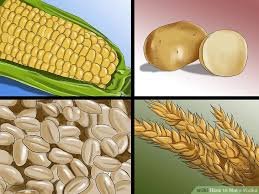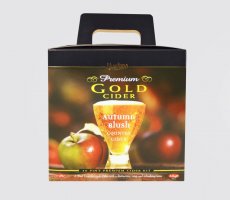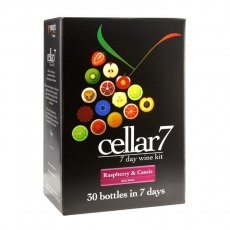How to make Vodka

Making Vodka using Pure Sugar ( dextrose brewing sugar):
Using pure sugar will produce a super clean Vodka, and most people will find that they prefer this Vodka more than that made with extracts or traditional starch materials.
If there is one yeast in the Distillery series where it is essential to use pure dextrose/brewing sugar, then this is the one.
Instructions for making Vodka
- Start with 21 litres of 30°C water in your clean and sterilised fermenter.
- Add 6kg dextrose/brewing sugar and stir to dissolve, this will increase the volume to 25 Litres.
- Add Turbo Carbon – doing this is essential to absorb impurities produced by the yeast during the fermentation process.
- Add the Vodka Yeast and allow to ferment for seven days, ideally at 18 – 22°C. Lower temperatures down to 15°C are okay but will increase fermentation time to twice as long. Higher temperatures are to be avoided if possible because it will increase off-flavours and aroma production from the yeast.
- The next step after fermentation is to add Turbo Clear to remove 99% to 100% of the solids (spent carbon/yeast cells and any other fermentation solids). If the wash looks hazy after treatment with Turbo clear don't worry– it is more important that the wash does not sit on the spent yeast and solids for more than 24hrs. Do not worry about the last 1% solids, go ahead and distil the wash one day after adding Turbo clear even if still a little hazy.
- Distil the bright wash after syphoning it off the sediment. To produce premium vodka quality, the perfect still will produce alcohol at between 90% and 93%ABV – the Turbo 500 still is excellent, run for five hrs rather than three or four hours to maximise purity. (The operating temperature will be about 55°C – 60°C)
- Once you have collected your distillate, dilute it to 50%ABV with good quality water then filter it through an activated carbon filter at least 0.5m in depth. For ultimate quality, filter it through two packs of Still Spirits Z-carbon using a 1.5m length tube (25 to 40mm internal diameter). The type of carbon is crucial, and it is essential to use Z-carbon.
- Dilute the distillate to 40%ABV with good quality water then bottle and allow for smoothing for at least one week but better if left for one month.
Recipe Using 2kg Coopers Wheat Extract:
Will produce smoother Vodka similar to the most famous Swedish Vodka.
Making Vodka using Wheat
- Add 2kg coopers wheat extract and 4.5kg dextrose into your clean fermenter with 3L boiling water, stir to mix (don't worry it does not dissolve at this stage). Top the ingredients up to 25 Litres with cold water, stir to dissolve completely.
- Add Turbo Carbon – this is crucial to absorb the impurities produced by the yeast during the fermentation period.
- Add the Vodka Yeast and allow to ferment for seven days at 18 – 22°C. Lower temperatures are okay down to 15°C but will double the fermentation time. Higher temperatures are to be avoided if possible because it will increase the chance of off-flavour and aroma production of the yeast. Using extracts will create excessive foaming so place somewhere appropriate and don't use an airlock (rest the fermenter lid loosely on the bucket).
- When fermentation is complete, add the Turbo Clear to remove more than 99% of the solids (spent carbon/yeast cells and any other fermentation solids). Don't worry if the wash remains slightly hazy after treatment with the Turbo clear – it is more important that the wash doesn't sit on the spent yeast and solids for more than 24hrs. It is more important to go ahead and distil the wash one day after adding Turbo clear even if it is still hazy than trying to remove the last 1% of solids,
- Distil the clear wash once the siphoning off the sediment has been done. For wheat vodka the still should produce alcohol at between 86% and 90%ABV – the Turbo 500 still is precise but ideally run it for only three hours to achieve this lower alcoholic strength.
- Once you've collected your distillate, dilute it to 50%ABV with good quality water, then let it stand for three days in a 10L bucket. Add one further sachet of Turbo Carbon, stir twice daily then allow the activated carbon to settle on day three before going on to fine filtering. Do not pass the distillate through activated carbon column filter as this will remove too much of the character from your Vodka.
- Dilute to 40%ABV with excellent quality water, then bottle and leave to smooth for at least one month.
Making Potato Vodka Recipe Using 4kg of Potatoes:
Using potatoes will produce a smooth potato vodka identical to the award-winning Chase Vodka. Chase vodka is renown as one of the world's most expensive and well known commercial Vodka's having won many acclaimed awards. It is made from potatoes and with the same ingredients as the Vodka Distillery Yeast & Still Spirits Turbo Carbon.
Potato Vodka Recipe
- Peel and then slice 4kg potatoes. Cover with cold water and bring to 70°C. Add the contents of the Still Spirits 4g amylase sachet and hold the approximate temperature for 6-8 hours or overnight. Remove from the heat then add 4.5kg dextrose/brewing sugar, stir to dissolve the sugar and then allow the mixture to cool to between 50–60°C.
- Transfer the entire contents into a fermentation bucket, then top the liquid up to 25 L with cold water, stirring to mix and allow the mixture to cool to below 25°C.
- Add Turbo Carbon – this is crucial to absorb the impurities produced by the yeast during the fermentation period.
- Add the Vodka Yeast and allow to ferment for seven days at ideally 18 – 22°C. Lower temperatures are okay down to 15C, but this will double the fermentation time. Higher temperatures should be avoided as it will increase the chance of off-flavour and aroma production of the yeast. Using starch source will create excessive foaming so place somewhere appropriate and don't use an airlock (rest the fermenter lid loosely on the bucket). During fermentation, the AG enzyme (contained within the Vodka Yeast sachet) will complete the task of changing the starch into fermentable sugars to maximise your yield.
- Once fermentation is complete, add Turbo Clear to remove more than 99% of the solids (spent carbon/yeast cells and any other fermentation solids). The wash mustn't sit on the spent yeast and solids for more than 24hrs. Rather than trying to remove the last 1% solids so don't worry if the wash remains hazy after treatment with the Turbo clear – go ahead and distil the wash one day after adding Turbo clear even if still slightly cloudy.
- Distil the clear wash once siphoning off the sediment is completed. For potato vodka the still should produce alcohol at 84% and 88%ABV – the Turbo 500 still is excellent and can be used but should be run for only two and a half to three hours to achieve this lower alcoholic strength. (Operating temperature will be about 650C)
- Collected your distillate, dilute it to 50%ABV with good quality water then let it stand for three days in a 10L bucket then add one more sachet of Turbo Carbon. Stir the distillate twice daily then allow the activated carbon to settle. On day three, when the distillate has ended, the next stage is to use a fine filter. Do not pass it through activated carbon column filter as this will remove too much of the character from your Vodka. Dilute the distillate to 40%ABV with good quality water, bottle and leave to smooth for at least one month.
- Use 4kg Crushed Wheat Grain: For a rich, full-bodied and complex vodka with a distinctive grain character. Follow the instructions exactly as above but using 4kg crushed wheat grain or whole wheat flakes instead of 4kg potatoes except ensure a 10-litre boil volume or the liquid will be too thick when it reaches the 'gelation point' at around 70°C.












